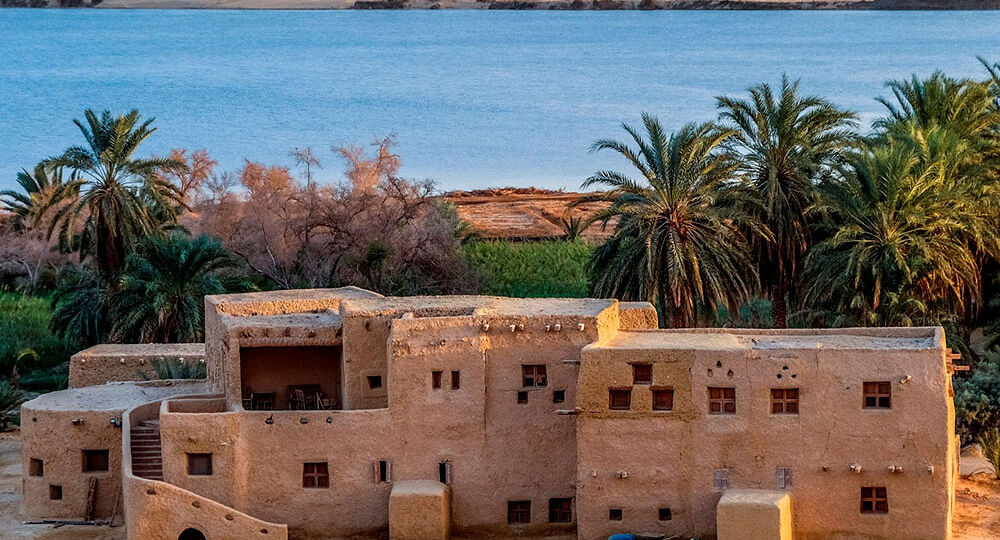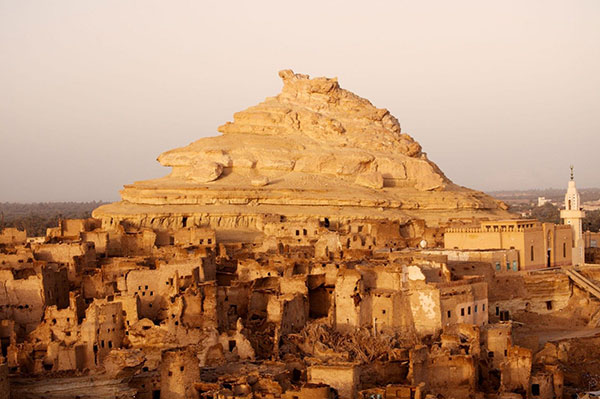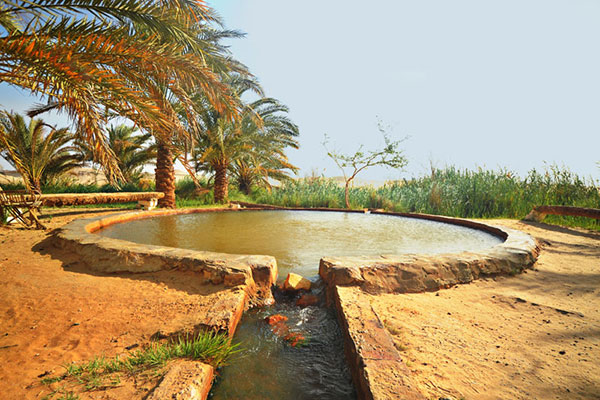
The most remote and unique of Egypt’s Western Desert Oases is Siwa. Nearly 350 miles from Cairo, this incredible speck of green in the sea of yellow sand that makes up Egypt’s west has a culture and history unto itself. The people of Siwa, actually speak their own language, which is closer to the Berber of the desert peoples further West than the Arabic spoken in the rest of Egypt.
Until the 1980’s when a highway was finally completed connecting it to the coastal town of Mersa Matruh, it was completely isolated from the rest of the country. Television and phones were introduced relatively recently here and the internet only with in the past few years.
Its fame lies primarily in its ancient role as the home to an oracle of Ammon, the ruins of which are a popular tourist attraction which gave the oasis its ancient name Oasis of Amun Ra. Historically, it was part of Ancient Egypt.
Discover Siwa
Fortress Of Shali:
The center of Siwa town is dominated by the spectacular organic shapes of the remains of the 13th-century mud-brick Shali Fortress. Built from a material known locally as kershef (large chunks of salt from the lake just outside town, mixed with rock and plastered in local clay), the labyrinth of huddled buildings was originally four or five story’s high and housed hundreds of people.
For centuries, few outsiders were admitted inside – and even fewer came back out to tell the tale. But three days of rain in 1926 caused more damage than any invader had managed and, over the last decades, inhabitants moved to newer and more comfortable houses with running water and electricity.
Now only a few buildings around the edges are occupied or used for storage, including the mosque with its old, chimney-shaped minaret.

Fortress Of Shali:
The center of Siwa town is dominated by the spectacular organic shapes of the remains of the 13th-century mud-brick Shali Fortress. Built from a material known locally as kershef (large chunks of salt from the lake just outside town, mixed with rock and plastered in local clay), the labyrinth of huddled buildings was originally four or five story’s high and housed hundreds of people.
For centuries, few outsiders were admitted inside – and even fewer came back out to tell the tale. But three days of rain in 1926 caused more damage than any invader had managed and, over the last decades, inhabitants moved to newer and more comfortable houses with running water and electricity.
Now only a few buildings around the edges are occupied or used for storage, including the mosque with its old, chimney-shaped minaret.

Fortress Of Shali:
The center of Siwa town is dominated by the spectacular organic shapes of the remains of the 13th-century mud-brick Shali Fortress. Built from a material known locally as kershef (large chunks of salt from the lake just outside town, mixed with rock and plastered in local clay), the labyrinth of huddled buildings was originally four or five story’s high and housed hundreds of people.
For centuries, few outsiders were admitted inside – and even fewer came back out to tell the tale. But three days of rain in 1926 caused more damage than any invader had managed and, over the last decades, inhabitants moved to newer and more comfortable houses with running water and electricity.
Now only a few buildings around the edges are occupied or used for storage, including the mosque with its old, chimney-shaped minaret.


